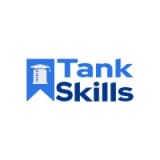This informal CPD article, ‘Innovations in Tank Storage Safety Practices‘, was provided TankSkills, who provide consulting and training for oil, gas, marine, and tank terminal industries including tailored HR solutions, efficient staffing models, and strategic recruitment.
Tank storage safety is crucial in an industry that deals with hazardous materials. As the industry grows, so do the risks. Recent innovations are transforming safety practices, making tank storage safer and more efficient. This article highlights key advancements and their practical applications.
Use of automated monitoring systems
One of the most significant advancements is the use of automated monitoring systems. These systems continuously monitor tank conditions, detecting temperature changes, pressure variations, and leaks in real time. Using sensors and software, they provide immediate alerts, allowing for quick response. This technology reduces downtime and maintenance costs, enhancing overall safety. For instance, the American Petroleum Institute found that automated systems cut incident response times by 30%.
Use of advanced materials
Another breakthrough is the use of advanced materials in tank construction and maintenance. Traditional tanks suffer from corrosion and wear, leading to potential failures. New materials, such as corrosion-resistant alloys and high-performance coatings, extend tank lifespan and reduce risks. NACE International reports that these coatings can extend tank life by up to 20 years, providing significant safety and economic benefits.
Importance of training
Training plays a vital role in tank storage safety. Advanced technologies require well-trained personnel to operate and maintain them effectively. Enhanced training programs now include simulations and hands-on exercises, preparing workers for emergencies and routine safety protocols.
Impact of innovations
Supporting these innovations are compelling statistics and research. The Occupational Safety and Health Administration (OSHA) found that companies adopting advanced safety practices saw a 40% reduction in workplace accidents. The global market for tank monitoring systems is also expected to grow significantly, reflecting the industry's commitment to these technologies.
Academic research backs the effectiveness of these advancements. The Journal of Loss Prevention in the Process Industries published a study showing that integrating automated monitoring with predictive analytics can foresee potential failures with 95% accuracy. This allows for proactive maintenance and better risk management.
Real-world examples highlight the impact of these innovations. Companies that have adopted automated monitoring systems and advanced materials report fewer incidents and improved operational efficiency. One leading oil storage firm saw a 25% increase in operational uptime after implementing these safety measures.
Conclusion
Innovations in tank storage safety practices are essential for ensuring safe and efficient operations. Automated monitoring systems, advanced materials, and enhanced training programs are setting new industry standards. Staying informed and adopting these technologies is crucial for anyone involved in tank storage. Embracing these advancements not only protects lives but also enhances operational efficiency and profitability. Let’s continue to prioritize safety and innovation, making the tank storage industry better for everyone.
We hope this article was helpful. For more information from TankSkills, please visit their CPD Member Directory page. Alternatively, you can go to the CPD Industry Hubs for more articles, courses and events relevant to your Continuing Professional Development requirements.













